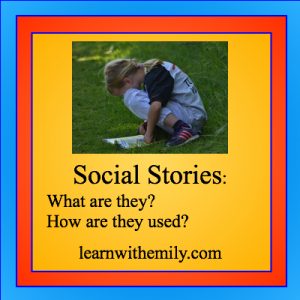This post may contain affiliate links. Affiliate links use cookies to track clicks and qualifying purchases for earnings. Please read my Disclosure Policy, Terms of Service, and Privacy policy for specific details.
Social stories are a teaching tool used to explain social situations to individuals with autism. Stories can be written for a specific child or for children in general. The story will include specific information about what occurs and why it occurs in a social situation. Relevant features including an explanation of perspective will also be included (Quill, 2002).
Where did social stories originate?
Social stories were first created by Carol Gray. Her current book provides a set of prewritten social stories to explain life situations. The stories in this book are written for children whose language comprehension skills match or exceed their same-age peers. Some reviewers felt like the stories were geared towards older children. I have read this book with my children and I would agree that many of the stories are not relevant to young children.
Carol Gray has co-authored another book available on Amazon. Although I have not read this book, it appears to include stories that would be appropriate for a younger child. Some topics include napping, brushing teeth, taking medicine, etc.
What is an example of a social story?
Case study (this information is made up for the purpose of illustrating a social story): Judy has autism and does not respond to peers who greet her in the hallway. Her teacher created a social story to explain this social situation.
People like to greet each other when they see someone for the first time during the day. Greeting may include the words: hi, hello, how’s it goin’, what’s up, or hey. You will know if the person is talking to you if they are looking at you. It is polite to greet the person back. You can look back at the friend and say: “Good to see you,” “Hi,” or “Hello.”
Key points for social stories:
- Social stories are not designed as a way to change behavior. They are designed to explain social situations.
- The explanation provided should be concrete.
- The language in the social story should match the language comprehension of the child. Pictures and drawings may be used in a social story to boost comprehension.
In summary, social stories were created as a way to explain social situations to individuals with autism spectrum disorder. Information about what occurs and why it occurs should be explained in a concrete manner.
References
Heflin, L. J. & Alaimo, D. F. (2007). Students with Autism Spectrum Disorders: Effective Instructional Practices. Upper Saddle River, NJ: Pearson Education.






